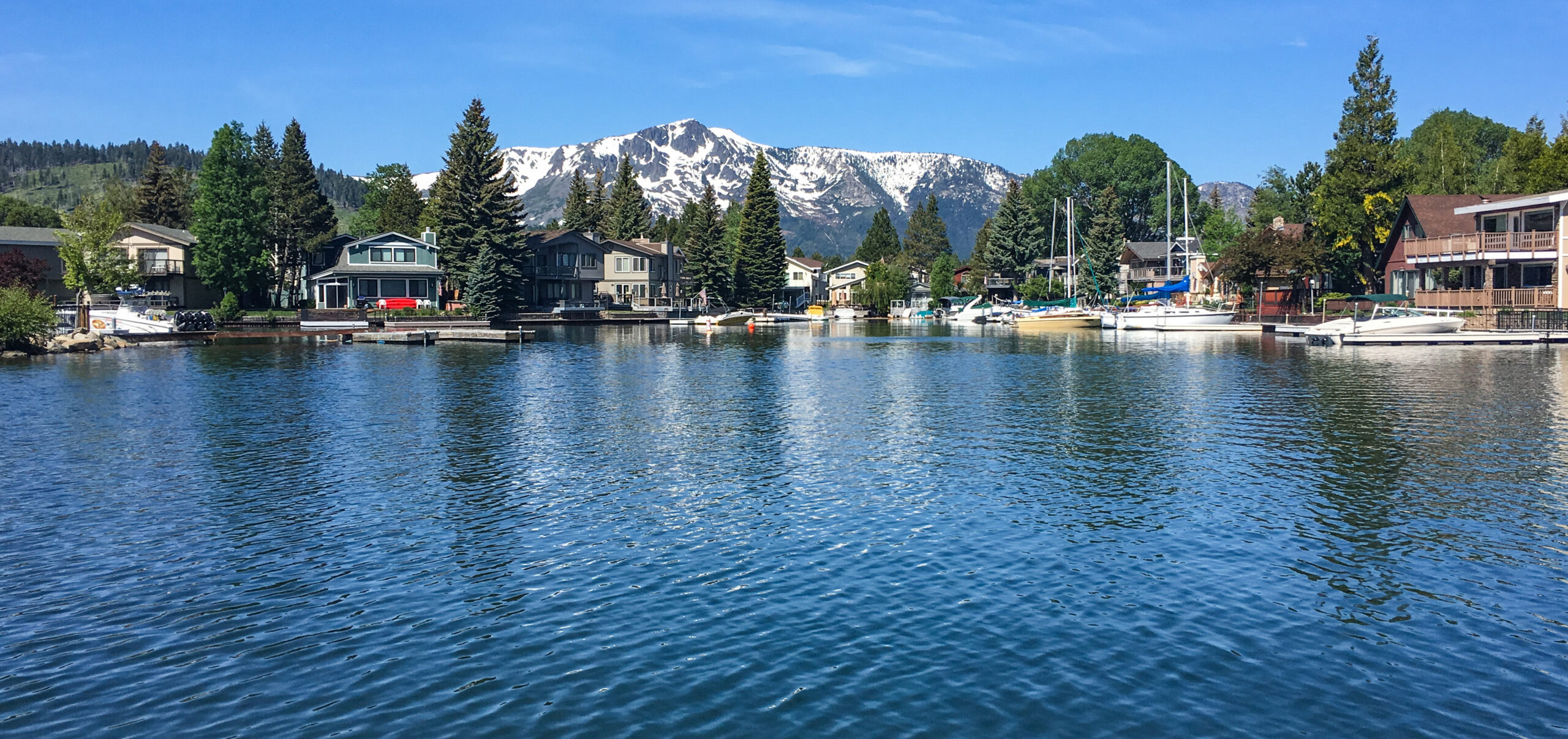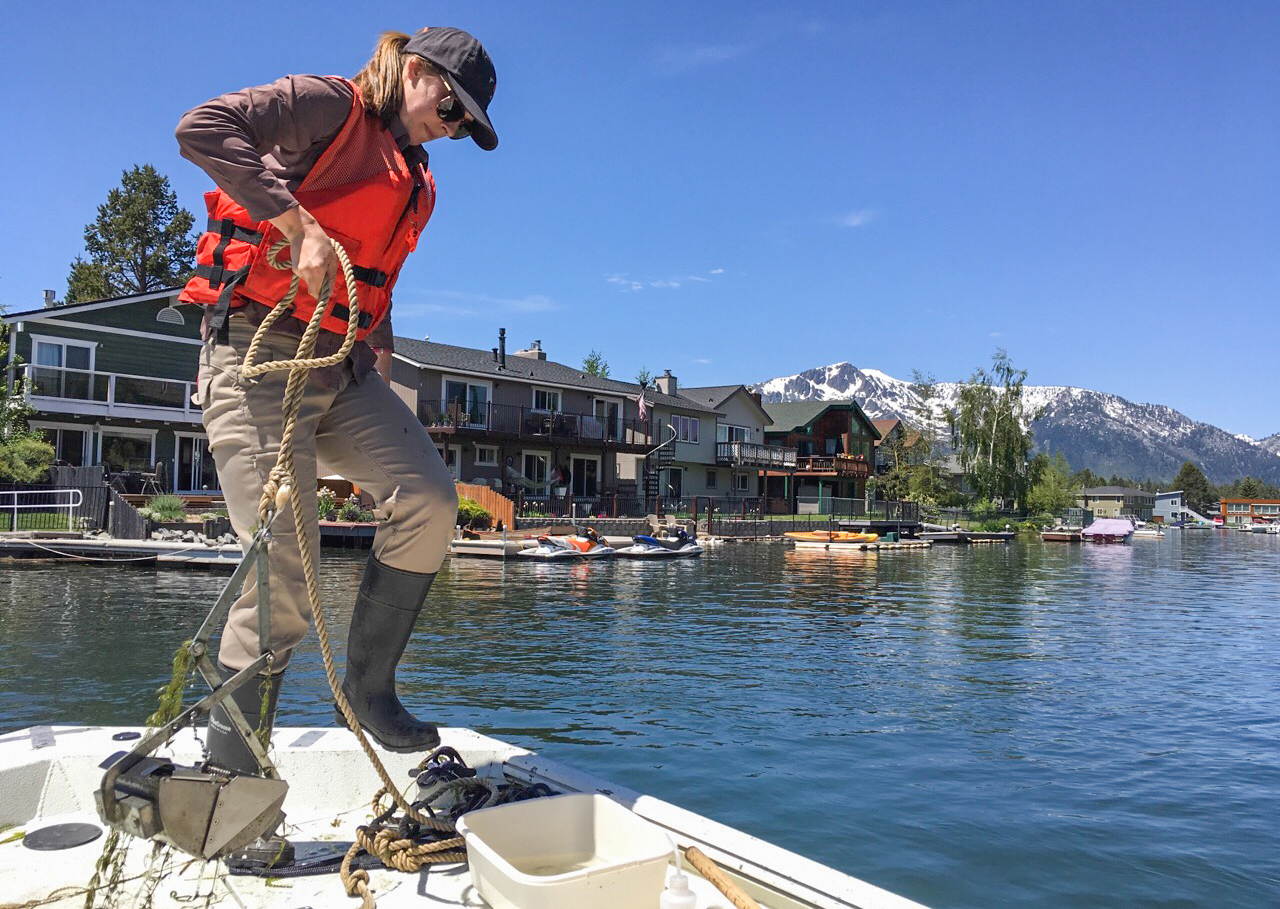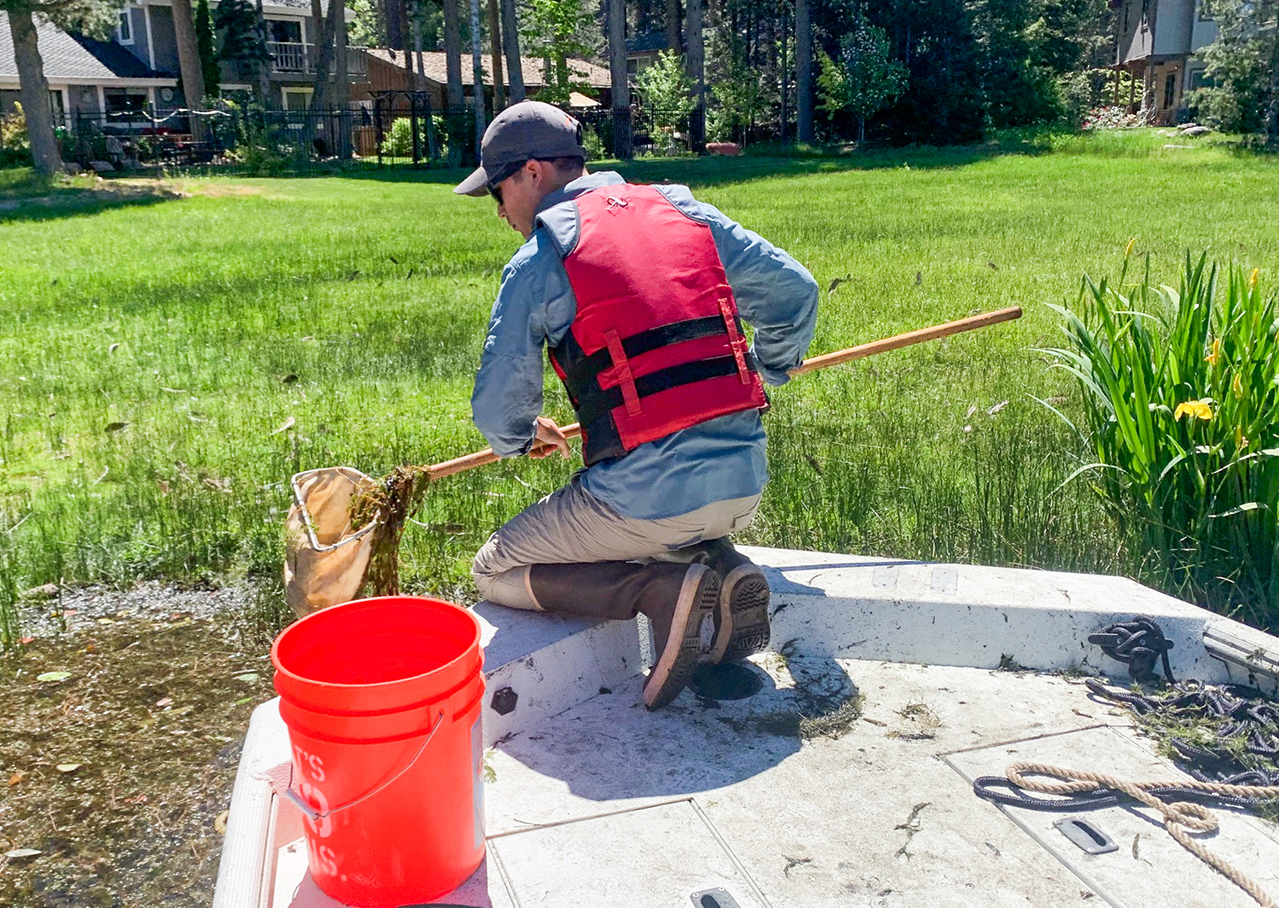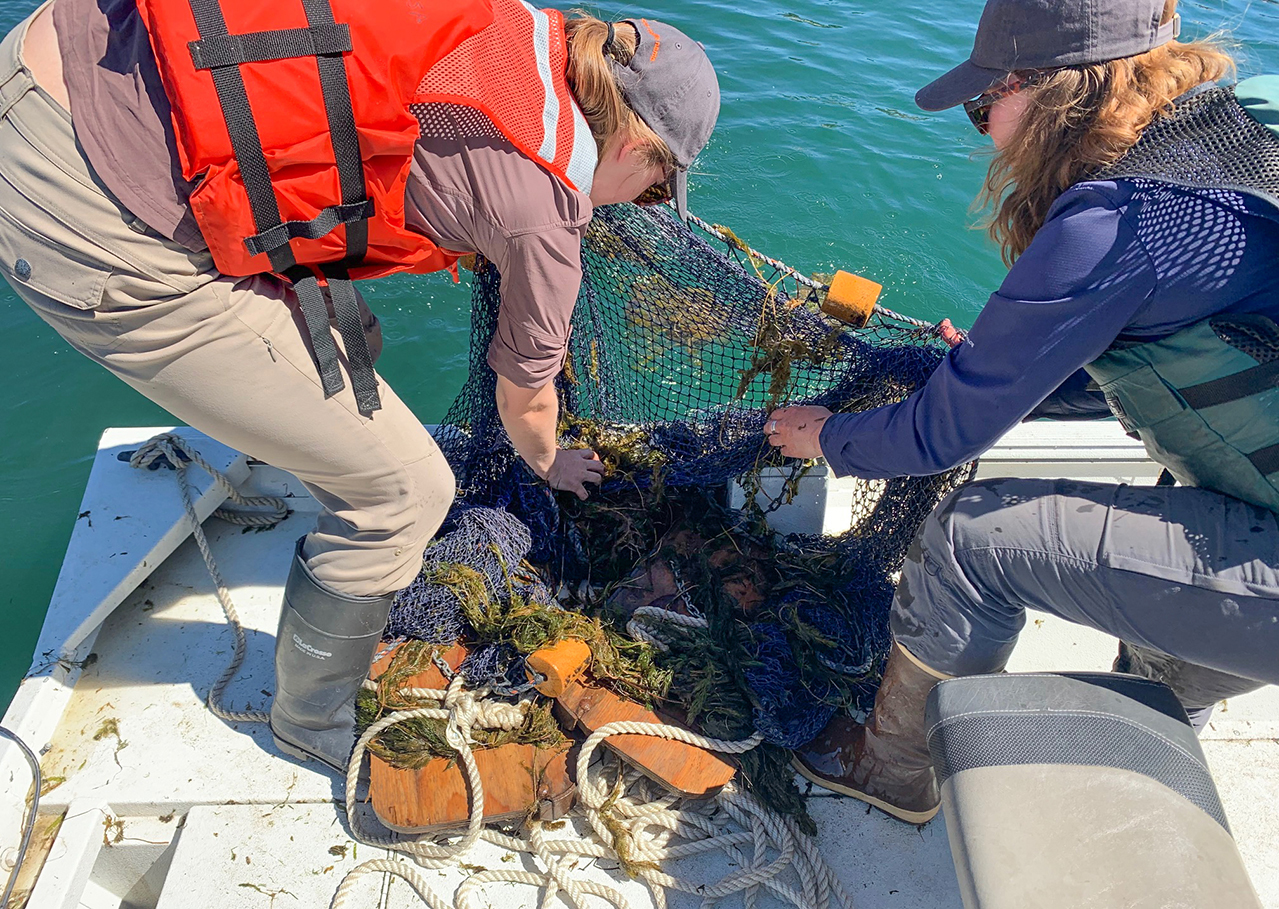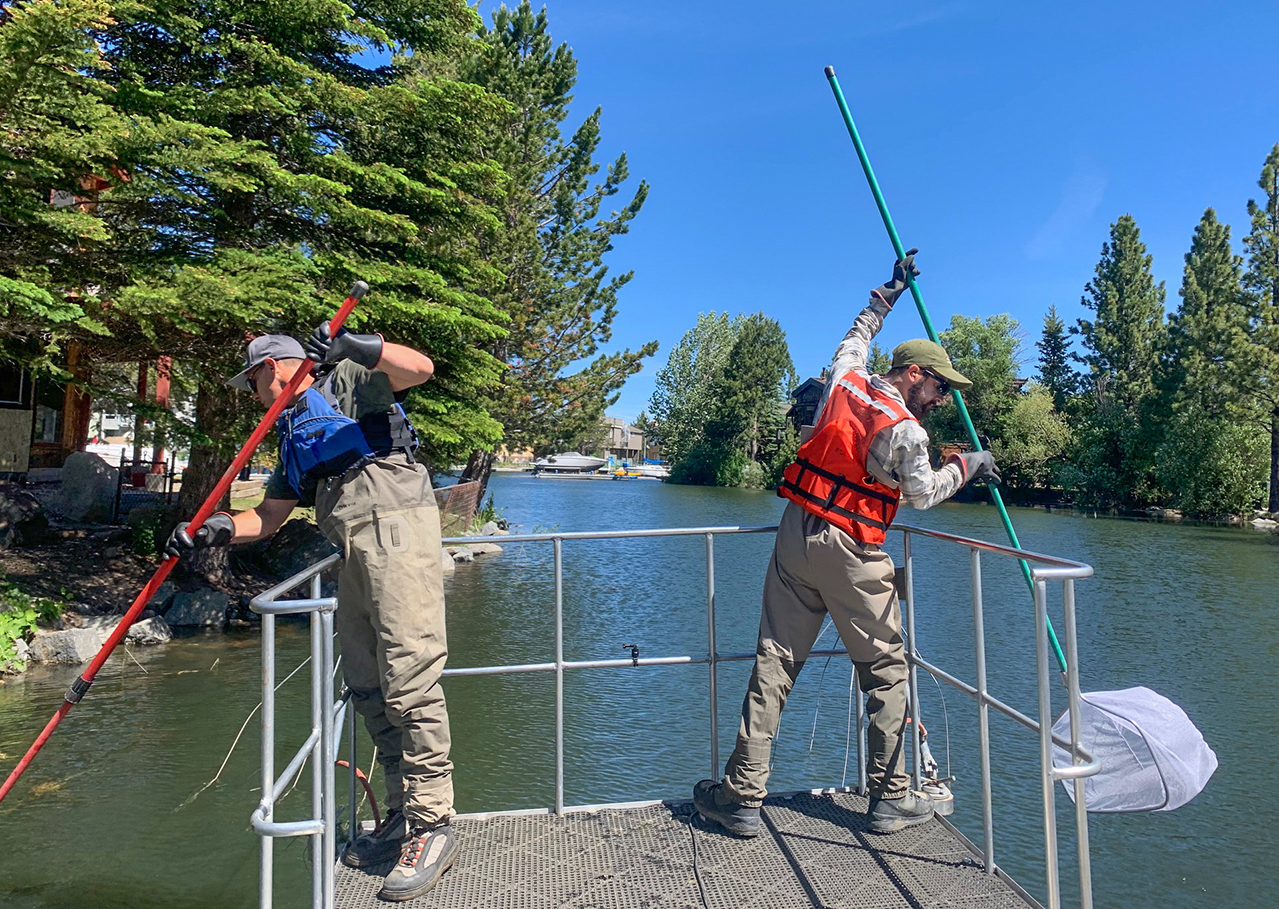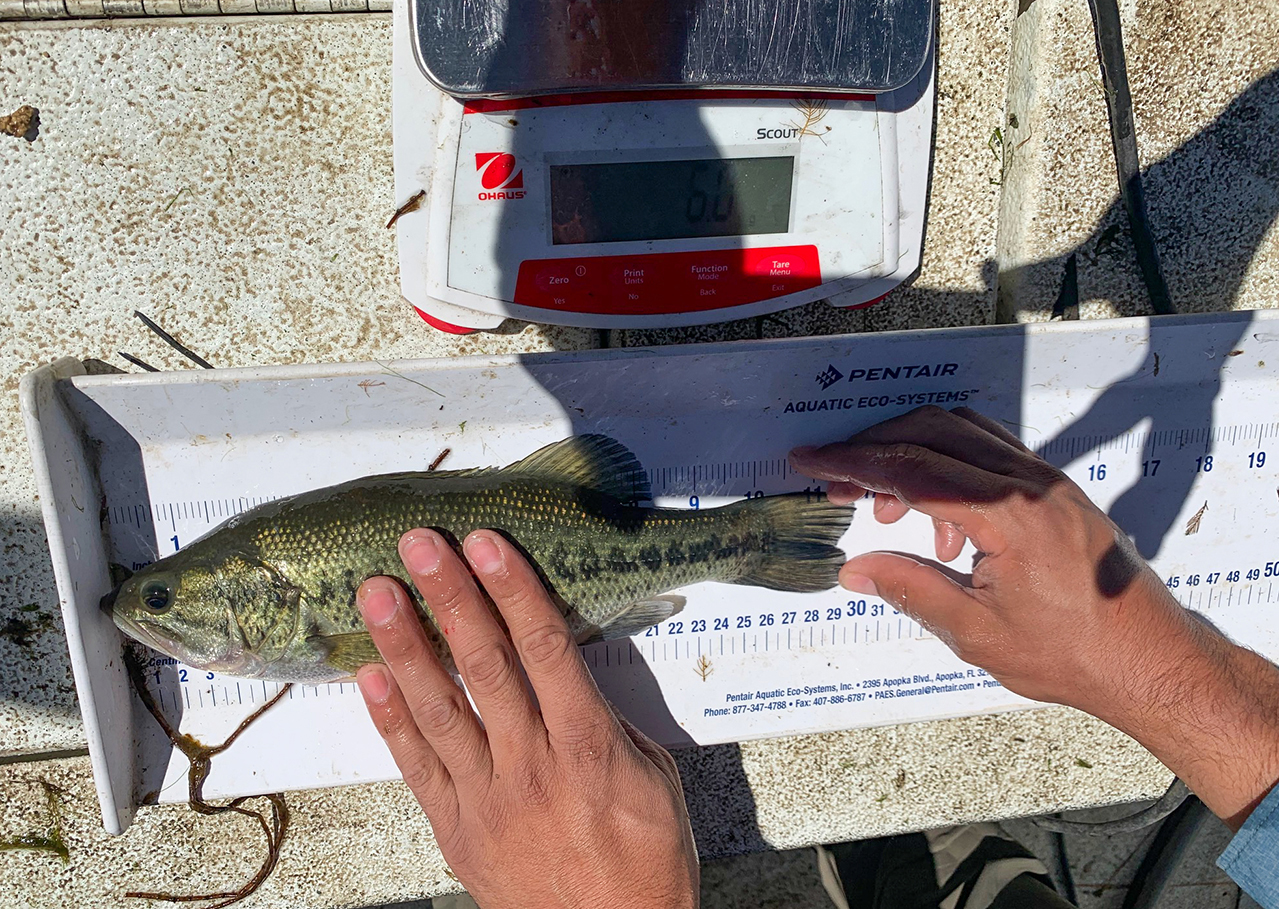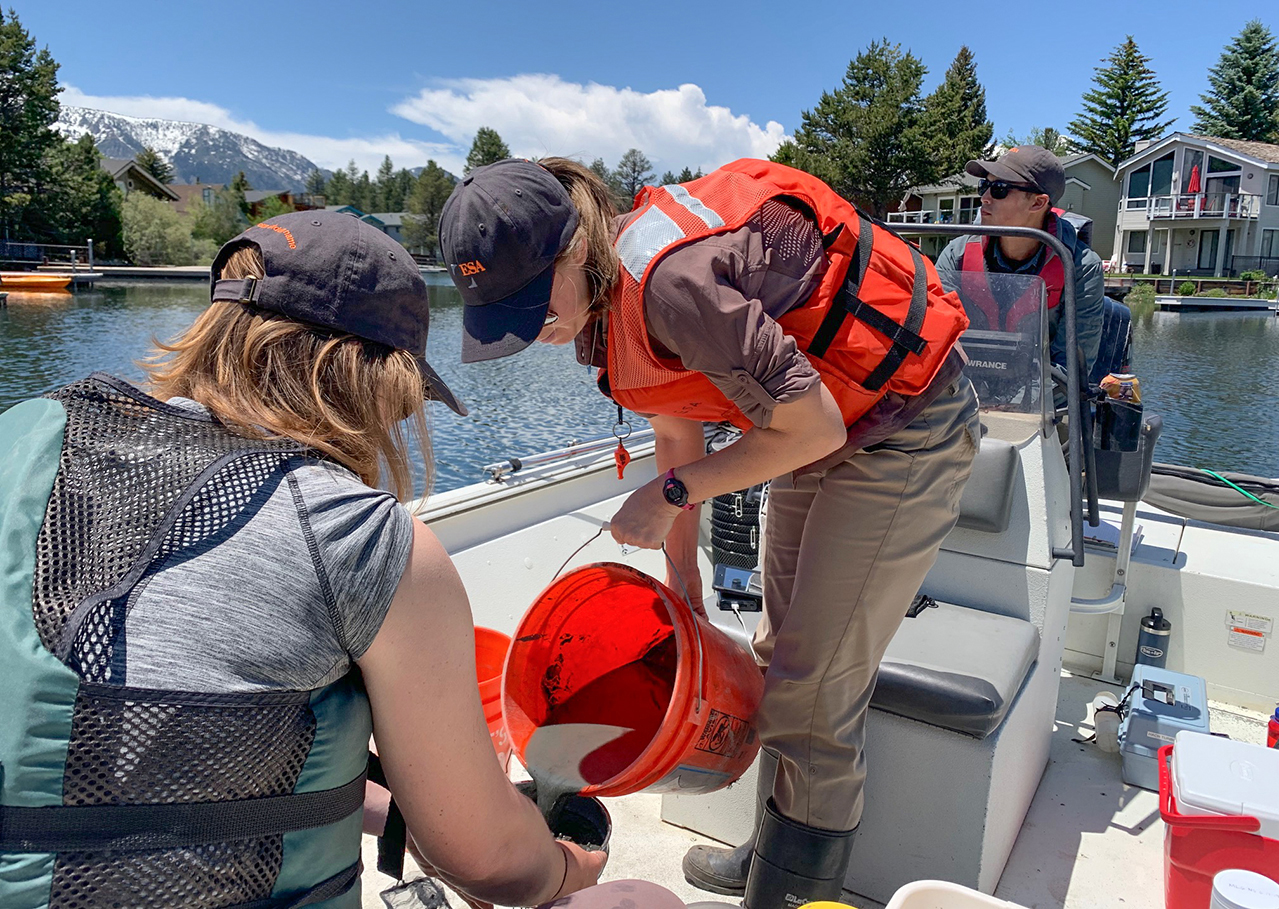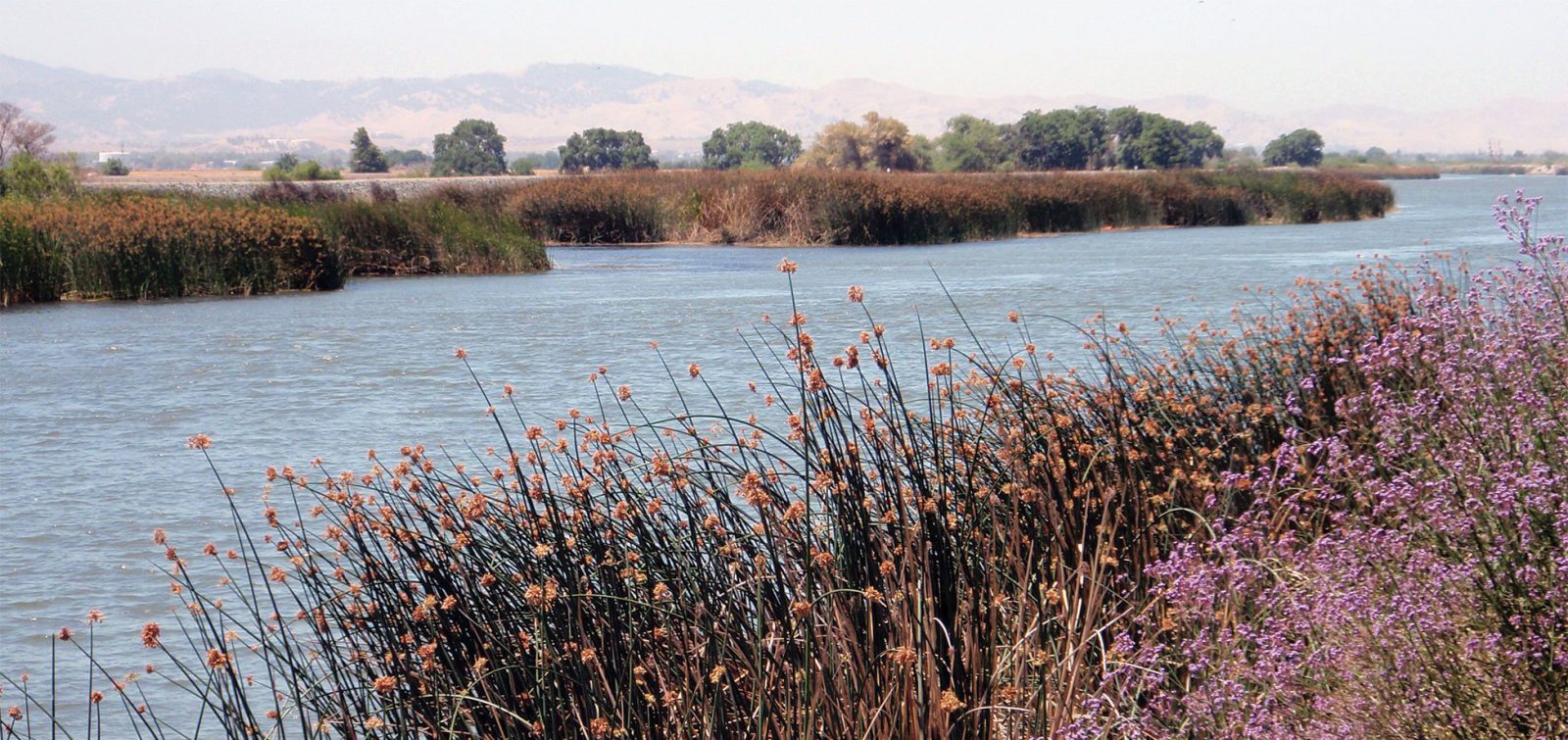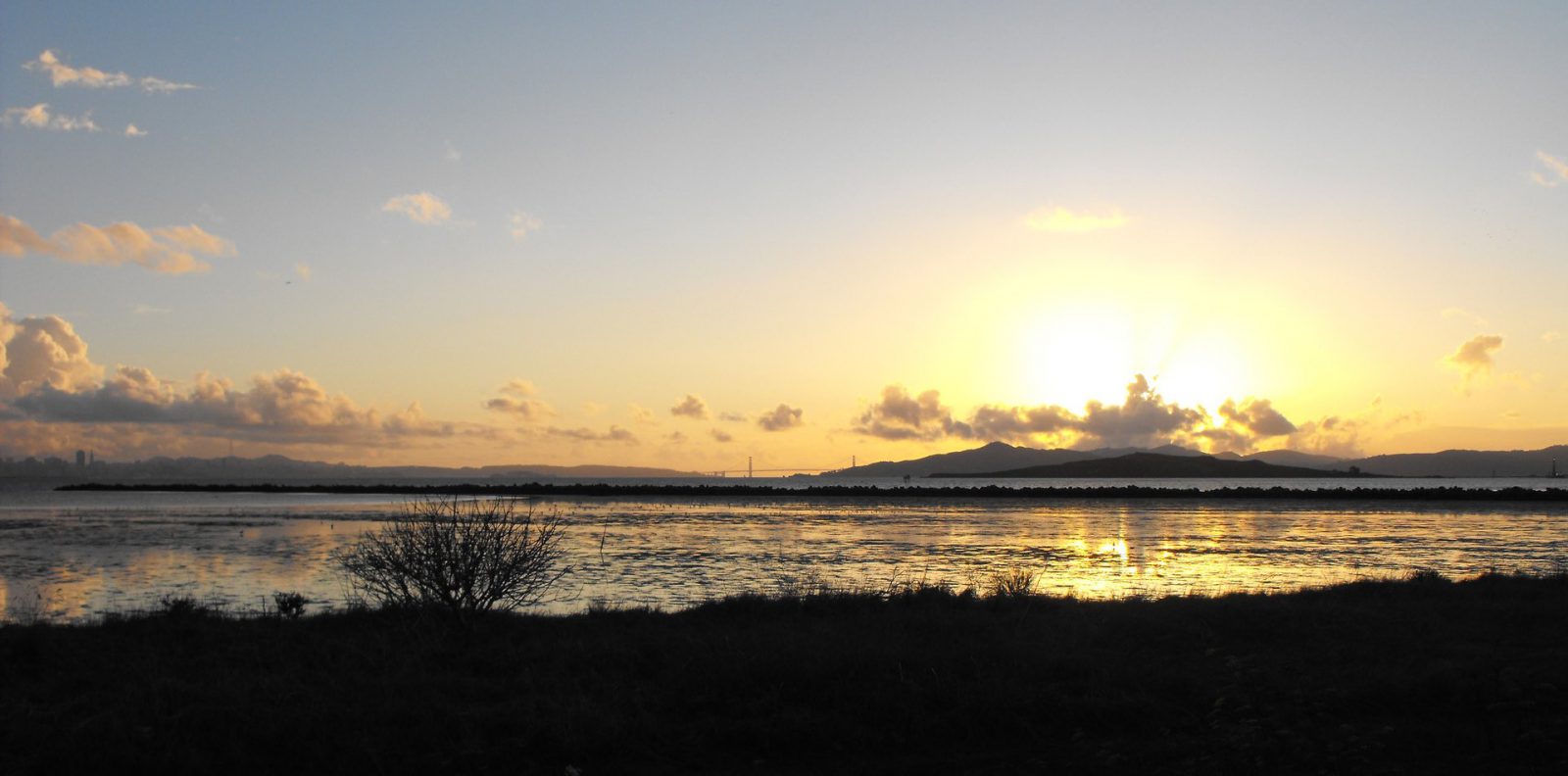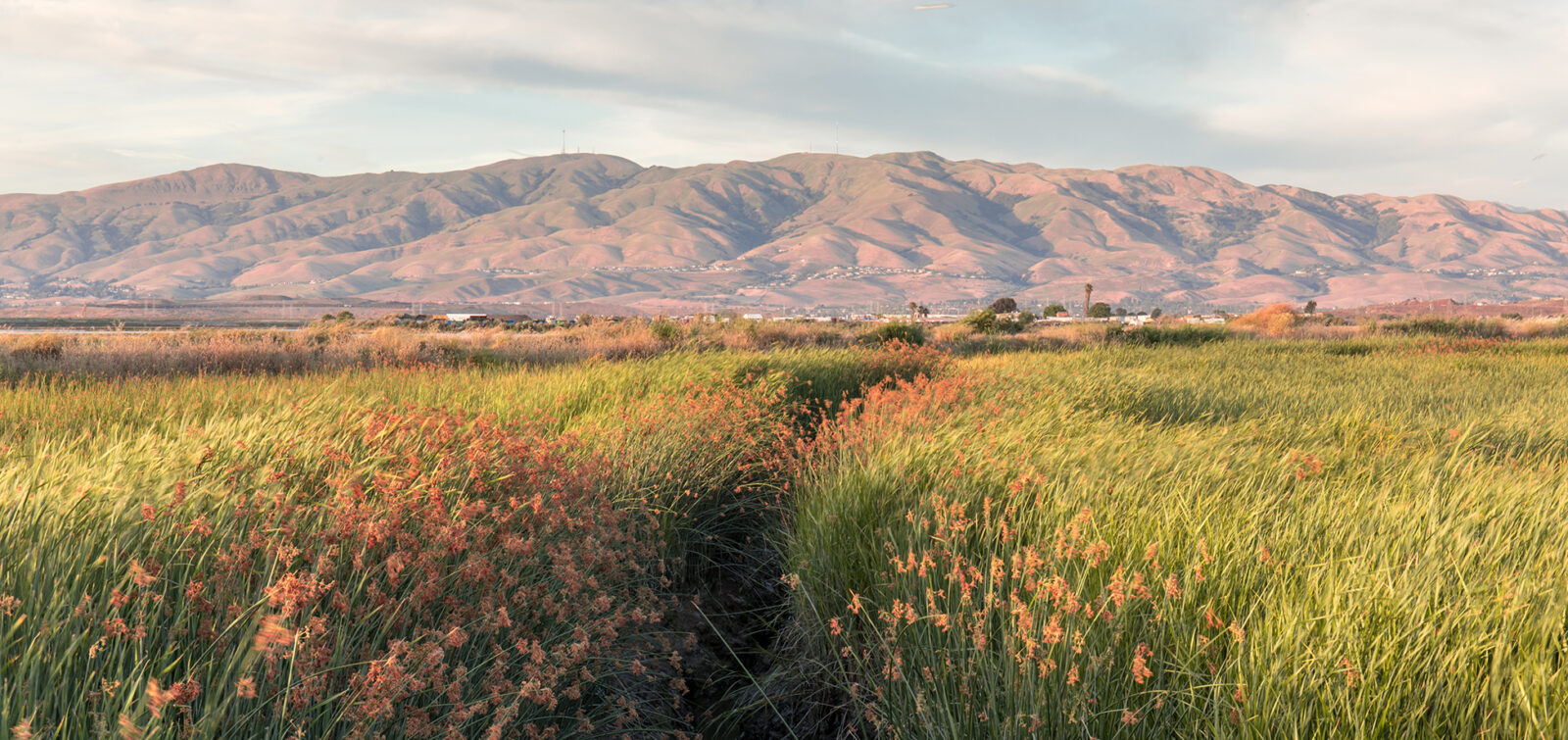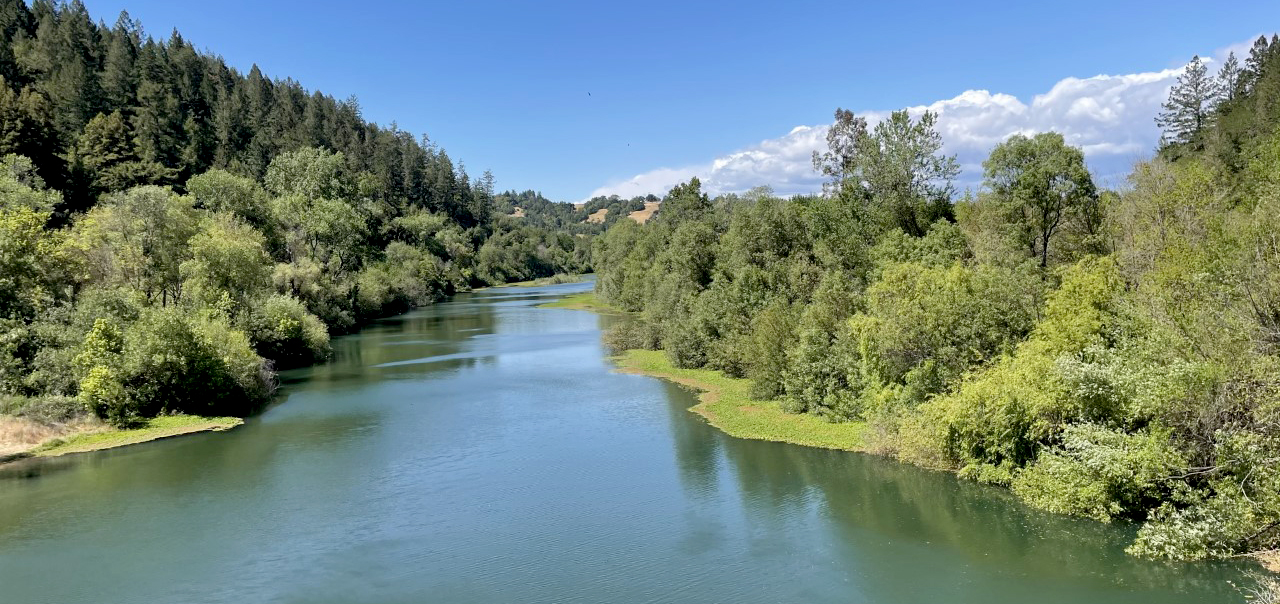While Lake Tahoe’s crystalline azure has lasted for eons, the changes wrought by past land uses in the basin have transformed its blue from merely a color into a cause—to protect this designated Outstanding Natural Resource Water. ESA is playing a quiet but key role in support of that cause—protecting the lake’s extraordinary clarity and overall ecological health by helping tackle one of its greatest threats, the introduction and spread of aquatic invasive weed species.
While invasive weeds have established in several locations around the lake, one location that is of greatest concern is the Tahoe Keys residential development in South Lake Tahoe, California. Built in the 1960s in a portion of a former marsh area where the Upper Truckee River flows into the lake, most homes in Tahoe Keys front on shallow artificial channels that allow residents to dock boats and enjoy direct access to Lake Tahoe through a channel.
Over time, the Keys’ warmer water has become home to invasive weeds as well as other non-native species, notably (but not exclusively) fish that thrive in weed-infested habitats.
According to the University of Nevada’s 2015 Implementation Plan for the Control of Aquatic Invasive Species within Lake Tahoe, the Keys are one of the top-ranked locations to focus reduction efforts “due to the magnitude of the plant and fish infestations as well as the high recreational use of these areas by Tahoe boaters.”
The goal is to keep these invaders from expanding and further spreading within the lake.
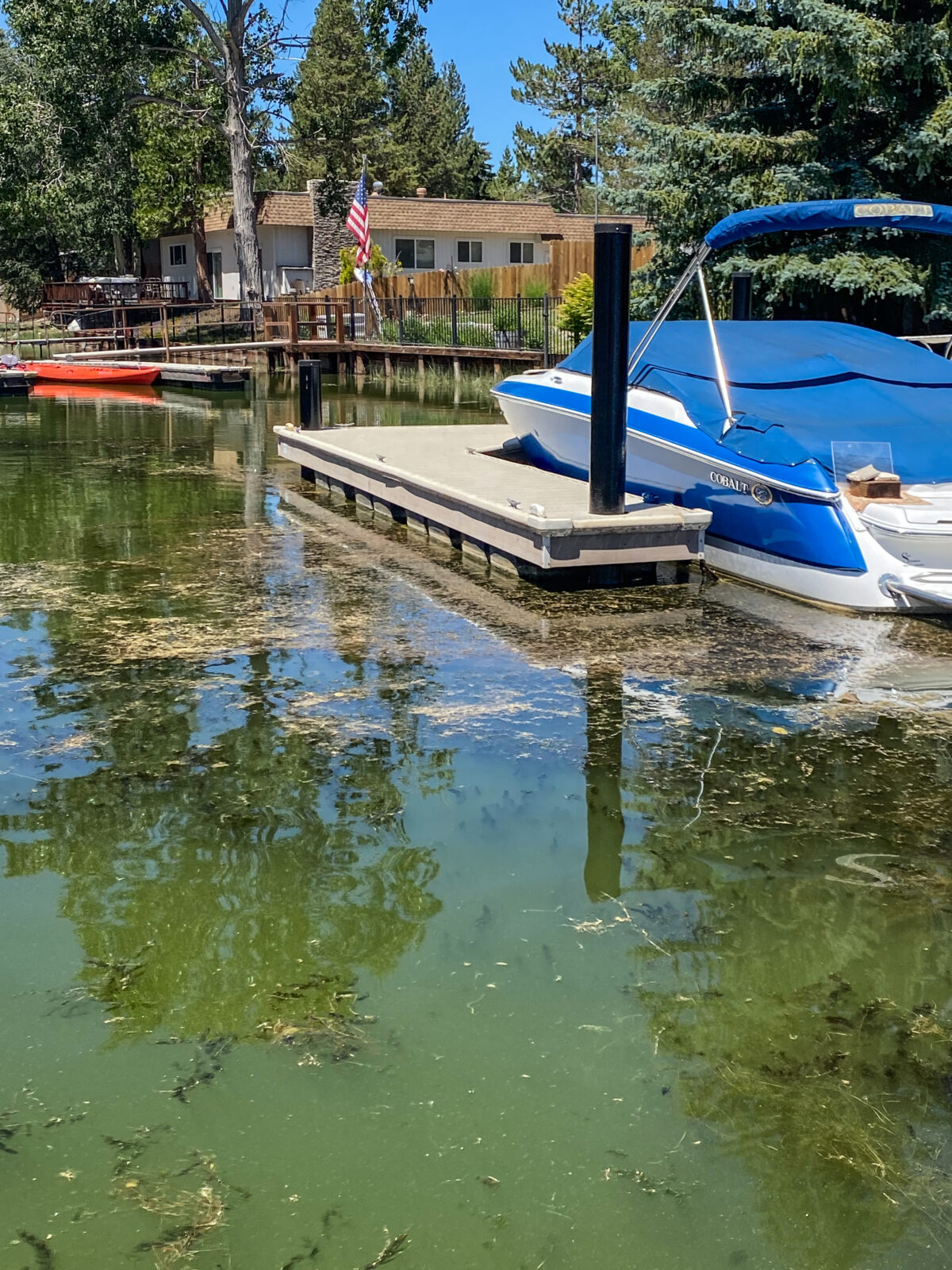
Ceratophyllum demersum, commonly known as coontail, is one of the invasive aquatic weeds within the Tahoe Keys.
These concerns are not limited to the environmental community, as some might expect, but are shared by Tahoe Keys residents, the Tahoe Keys Property Owners Association, and numerous other stakeholders in the Lahontan Basin. After years of discussion, notably involving opposition of the use of aquatic herbicides in the Basin, the Tahoe Regional Planning Agency (TRPA) and its partners undertook an investigation to find the best way to deal with these invaders.
After evaluating several candidates, TRPA brought ESA into the investigation in its early planning stages, on the basis of our long experience and deep expertise. We were selected, as part of a larger team, to support the environmental review for evaluating control method tests (CMTs) to identify the most suitable method or methods—in conformity with CEQA, NEPA, TRPA, and other regulatory requirements—not just to suppress the invasive weed species and their propagation, but also to avoid harmful unintended side effects.
The ESA fish and aquatic science team began its work by going into the field to collect data on the Keys’ water quality, plant community, aquatic insects, and fish to gain a clear understanding of baseline conditions. This effort led to the development of an Environmental Impact Report/Environmental Impact Statement (EIR/EIS) and a temporary exemption on the prohibition of aquatic herbicides in the Lahontan Basin.
As part of the monitoring effort, ESA’s Fish and Aquatic Science team collected baseline data including samples of invasive aquatic vegetation and fish, and continue to evaluate control methods targeting invasive weeds.
With baseline data in hand, we’re now evaluating several control methods to target three invasive weed species over a three-year period. In addition to testing EPA-certified aquatic herbicides, which were carefully selected to avoid any that could long persist in the environment, other control methods include diver-assisted suction harvesting (DASH), laminar flow aeration, ultraviolet light treatments, and deploying “bottom barriers” to keep weeds from putting roots down in the channel beds.
ESA is not applying any of these CMTs. Instead, each method is being applied by firms that are familiar with them, and each is being tested in discrete areas. Aquatic herbicides were applied only in the first year, and those treatments were separated by vertical turbidity barriers to keep the aquatic herbicides confined to their intended treatment plots in the Keys and prevent exchange into the lake.
ESA Project Manager Toni Pennington, PhD, emphasizes that “we are in year two of a three-year program intended to evaluate how the various control methods meet the objectives of the CMT: to improve native plant communities, provide three-foot vessel hull clearance, and provide at least a 75% reduction in target species biovolume.”

“The stakeholders have been pleased with results to date, recognizing that each method has its pros and cons.”
Toni Pennington, PhD, Aquatic Biologist
“What ESA is doing,” explains project director Chris Fitzer, “is providing TRPA and its stakeholders with an objective assessment of the various control methods—both for their effectiveness in suppressing invasive species and for their potential direct or indirect effects on the environment. By assessing our current findings against data we’ve previously collected, TRPA will be able to learn the effect of each possible method in controlling invasive plants and in detecting any harmful effects on the aquatic invertebrate community and—of course—on water quality.”

“ESA’s job is not to find a silver bullet, but to be objective and let the data inform manager and policymaker decisions. We’re providing a purely objective assessment of the data.”
Chris Fitzer, Fish and Aquatic Science Practice Lead
The CMTs in Tahoe Keys will take more time to provide clear results and useful recommendations. The next step may be a pilot project or, conceivably, a full invasive species management program. Whatever comes next will build on the monitoring of control methods that ESA is currently conducting—and it should help to preserve Lake Tahoe’s crystalline azure.
For more information regarding this project, please reach out to Toni Pennington.
